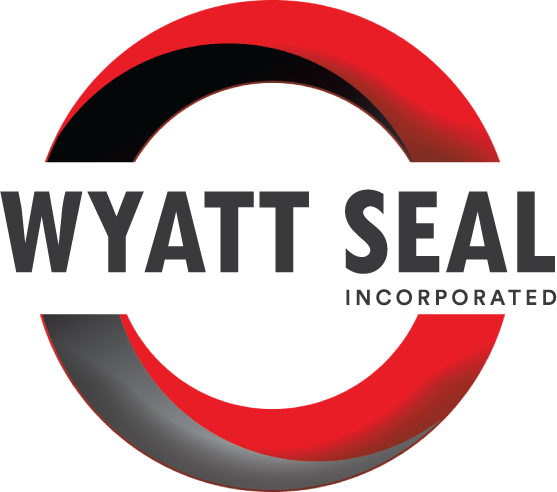
Choosing the right O-ring material is critical to the performance and longevity of your seal. Among the many options available, Viton® and nitrile stand out as two of the most widely used. Both offer strong sealing capabilities, reliable compression set, and distinct chemical resistance profiles. But how do you know which is the better fit for your application?
Nitrile O-rings
Nitrile O-rings—also known as NBR or Buna-N—are the most commonly used O-rings on the market, largely because they are both versatile and cost-effective. However, they do come with certain chemical and environmental limitations that should be considered.
Nitrile is a synthetic copolymer of acrylonitrile and butadiene, and its properties can shift depending on the acrylonitrile content. A higher acrylonitrile percentage improves resistance to oil and fuel but reduces low-temperature performance. Lowering the percentage has the opposite effect, extending temperature range but sacrificing fluid resistance. In either case, these modifications typically increase cost.
For more demanding applications, nitrile can also be hydrogenated (HNBR), which enhances its ability to withstand heat, oils, fuels, ozone, and some aggressive chemicals. The tradeoff, again, is higher cost. For the purposes of this comparison, we’ll focus on standard nitrile with typical acrylonitrile content rather than HNBR variations.
FKM O-rings
Fluorocarbon rubber, commonly abbreviated as FKM, is a high-performance fluoroelastomer and one of the most reliable materials used in sealing applications today. Viton® is the well-known brand name of FKM and is manufactured by Chemours. Regardless of terminology, the material is the same and is widely used for O-rings because of its broad temperature capability and exceptional durability.
Different grades of FKM are available, with Viton® A, Viton® B, and Viton® F being the most common. The primary distinction lies in fluorine content: Viton® A contains 66% fluorine, Viton® B contains 68%, and Viton® F contains 70%. As fluorine content increases, so does resistance to harsh chemicals and demanding environments—though this often comes with a higher material cost. Viton® A is the standard grade for general use, while Viton® B and Viton® F are selected for more specialized applications.
For the purpose of this comparison, we will focus on standard FKM (Viton® A).
FKM vs. NBR: Key differences
When selecting between NBR and FKM O-rings, it is important to understand how their performance characteristics compare. While both are reliable sealing materials, they differ significantly in temperature capability, chemical resistance, and durability—factors that determine which material is best suited for your application.
Temperature
- NBR: -30°F to 250°F (-35°C to 120°C)
- FKM: -15°F to 400°F (-26°C to 205°C)
Performance Characteristics
- Chemical Resistance: FKM outperforms NBR in resistance to fuels, oils, solvents, and many aggressive chemicals.
- Environmental Resistance: FKM maintains integrity under extreme conditions and is resistant to mold, ozone, and weathering.
- Abrasion and Tear Resistance: Both materials perform well, but NBR typically offers higher abrasion and tear resistance, making it a strong choice for mechanical wear applications.
Limitations
NBR O-rings are not ideal for harsh chemical environments or prolonged outdoor exposure. Their resistance to specific liquids can also be reduced when the material is formulated for extreme high or low temperatures. Conversely, FKM O-rings should be avoided in applications involving brake fluid, ketones, hot water, or very low-temperature conditions, where performance may be compromised.
Common Applications & Uses
Both NBR and FKM O-rings are widely used across many industries, though their applications differ based on material strengths:
- NBR O-rings: Commonly used in hydraulics, pneumatics, and fuel systems. Typical applications include automotive equipment, off-road machinery, certain military applications, marine devices, and aircraft fuel systems.
- FKM O-rings: Often found in automotive, aerospace, and other mechanical systems that demand high-temperature performance or resistance to aggressive chemicals
Cost
NBR O-rings are generally more cost-effective than FKM. However, specialized formulations of NBR, such as those designed for extended temperature ranges or enhanced chemical resistance, can increase material cost.
Choosing the right material for your application
Selecting the appropriate O-ring material depends primarily on the specific requirements of your application. Both NBR and FKM offer advantages, and the best choice will vary based on factors such as temperature, chemical exposure and environmental conditions.
For instance, if the operating temperature ranges from 32°F to 212°F (0°C to 100°C), the application is internal, standard hydraulic oil is used for lubrication, and no aggressive chemicals are present, NBR is generally the more cost-effective choice.
On the other hand, if the application involves higher temperatures, outdoor exposure, UV light, or contact with more aggressive chemicals, FKM is likely the better option. Ultimately, a thorough review of all operational conditions is essential to determine the O-ring material that will provide reliable performance and longevity.
Next Steps in Your O-Ring Selection
Because every application has unique requirements, it’s important to carefully review all operational conditions before making a decision. At Wyatt Seal, our team of sealing experts can help you determine the best material for your O-ring needs. We also offer a convenient O-ring size chart application to quickly find the right sizes for your specific requirements, making it easier than ever to select the perfect seal for your project.
If you need help navigating this process to find the right seal for your project, talk to a seal expert at Wyatt Seal. We’ve spent 50 years building relationships with seal manufacturers worldwide to offer you access to thousands of seals, gaskets, O-rings, and other specialty items for any application.

